- Home
- Eric Flint
The Grantville Gazette Volumn II Page 24
The Grantville Gazette Volumn II Read online
Page 24
Things hadn't gotten any better when she went to Rodney and Pris' place. Last night in the dark, she hadn't noticed the engagement ring that Pris was wearing. Rodney was like her little brother. She certainly didn't think of him in any romantic way but she had felt a stab of something like hurt or grief when she'd seen the ring. She knew they were getting serious and had sort of seen this coming. She also knew from experience with two of her brothers that things would change now. Rodney would, quite naturally, be changing his priorities to his wife and eventual children. That had to come first. She understood and even applauded that.
She had admired the ring and congratulated both of them. She'd even managed to smile and joke. Inside, though, it was different. Normally, she'd have talked to Sharon or Elizabeth but Sharon was deployed with one of the mobile units who were trying to help out Gustavus Adolphus and Elizabeth was doing railroad stuff somewhere. And Beulah....
Things were pretty strained between the two of them at the moment. Mary Pat knew Beulah didn't approve of the attitude of the Jenaites toward women or nurses. She also knew that Beulah had to play diplomat, a role she wasn't too comfortable with. Beulah had talked to her about trust building and potential and need and different cultures. Beulah was a public health nurse. Beulah knew how to do that kind of stuff. Mary Pat however, was more on the trauma end of things. Grab 'em and go was closer to her reality. And my own impulsiveness and temper didn't exactly help out either.
Mary Pat reached into the bag for the cheese and eggs. She still needed to stop by the bakery but the bread James had left would do for today. One of the nice things about being in the seventeenth century was that the bread wasn't that store bought yuck she'd grown up with. This bread had some real taste to it.
Rationally, she knew Beulah had been trying to teach and comfort her under circumstances that were a strain for Beulah as well. Emotionally, she felt betrayed. She trusted Beulah, counted on her. The incremental approach Beulah had taken didn't suit Mary Pat's nature at all. Beulah had tried to laugh it off as one of the benefits of age. Well, Mary Pat was thirty-one, not exactly a kid. Rodney was nearly ten years younger than she was and he was getting married. Before she knew it, he'd have kids and...
The hanky was lace trimmed. Beulah had tatted before arthritis had ended her hobby and now she was handing Mary Pat one of the few remaining hankies she'd made. Mary Pat had been so deep in thought she hadn't heard her come in, much less realized she herself was crying. "Thanks Beulah." She said stiffly. "I don't know what's wrong with me. I'm not the crying sort."
The floodgates suddenly opened and she was babbling, a jumbled collection of two years of grief and stress and confusion. Rodney and Pris. Sharon and Hans. Jena. Marriage and kids. No connections. Work and how tired she was. Missing her family. Aunt Heather and her brothers and Mom and Dad and the rest of the Flanagan clan. On and on and on. Beulah just listened and handed her another hanky.
* * *
"I'm glad you're crying. About time. You've been carrying a lot of things around with you for a long time and not letting any of us in. When we came through the Ring of Fire, no one handed you a cape and tights or put a Super Mary Pat on your chest, my dear." She'd been trying to sort out what Mary Pat was really saying while she listened.
"Things are changing, but you aren't alone. Rodney and Pris, Sharon and Hans just expanded your family. When the kids come along, you'll be Auntie Mary Pat. Yes, your relationships will change but that's life. Right now, you're looking at what you've lost instead of what you've gained."
The next area was more sensitive and Beulah wished for some of Rebecca Stearns' subtlety. "As for marriage and a family of your own, you're going to have to stop hiding in work and being deployed all over the place. I've seen you turn down several offers for dates during the last two years using that as an excuse. What are you really afraid of, loving someone that deeply and then losing them the way you did your up-time family?"
Mary Pat bolted. Beulah had anticipated her maneuver and reached over to grab her wrist. Mary Pat was younger and stronger and could have broken the grip and left but the pain on Beulah's face wasn't just from arthritis. There was such understanding, such shared grief there that all Mary Pat could do was lean against the cabinet and cry. Beulah reached out and took her in her arms, hugging her fiercely, knowing Mary Pat wouldn't have accepted that comfort earlier. I should have brought a hanky for myself, too. Is this what mothers feel when their children are hurting so badly? This need to do anything to take the pain away, the intense empathy with their pain?
"I'm sorry," Mary Pat said dully, looking spent and hollow. "I gave you nothing but trouble in Jena and now I'm whining like a baby because my life's a mess and it's my own fault."
Beulah loosened her grip and leaned back, pretending shock. "You mean you were the one responsible for the Ring of Fire? You were the one who shaped the attitudes of the early modern era? I'd have never guessed. Shame on you."
To her own surprise, Mary Pat gave a watery laugh, a little shaky but still a laugh. "Cut that out."
"You were more help than you know in Jena. I had quite a bit of time to think the last couple of days. They needed to see that we wouldn't take their attitudes lying down. I was so worried about being culturally sensitive and not putting my foot in my mouth that I didn't put forward much about our culture and beliefs. You did and in a way they couldn't miss. That may not be the disaster you're making it out to be. These are not stupid people and we're all motivated to make the project work. It'll take time and effort but we'll get it done. You aren't the only one trying to make it happen. I'm sorry that I was so selfish in asking you to be part of this. I thought it would help you get a break."
She let go of Mary Pat and motioned toward the kitchen table. That was where the two of them always sat and talked. She wished she could promise her that she would always be there for her. Reality was different. Beulah was not getting any younger in a time with a lousy life expectancy.
"I never had kids myself but I've still had a great life. I wouldn't change any of it, including the Ring of Fire oddly enough. Without that, I'd never have met you. I'd have just been another retiree with too much time on her hands. I'd never have met so many interesting people or grown as much. I didn't think an old dog could still learn so many new tricks. I know things have been a little tense with us lately but I wanted you to know that I love you as though you were my own daughter. I'm not your mother but you still have someone who loves you that way. You have more connections than you know here. It's time to start reaching out a bit, letting your heart heal. You do have a future here. You can shape that future. It's up to you but you won't be alone while you're doing it."
To Be Continued In The Next Issue
A Quick And Dirty
Treatise On Historical Fencing
By Enrico M. Toro
"Et l'oggetto di questa scienza altro non è che il riparare et il ferire... le quali non potrà alcuno sapere se prima non havrà la cognitione dè tempi e delle misure..."
[...and the goal of this science is nothing else but to parry and to wound... Things nobody can perform unless they are aware of times and measures...]
Nicoletto Giganti, 1606
A Short History
It's easy today to have a very distorted view of what fencing was at the time of the Ring of Fire. Real fencing is not Errol Flynn or the Three Musketeers. Hollywood swashbuckling movies set in the early modern era feature unrealistic flamboyant fencing. The only other fencing moderns see is lightning-fast Olympic fencing. Both of these are far different from the fencing taught in the 1630s in hundreds of academies throughout Europe.
The slow rate of fire and the poor accuracy of firearms made fencing the most common form of self-defense. And as any form of self-defense it was quick, lethal and, most of the time, brutal.
Dueling and the use of the sword are as old as human civilization. During the period from the end of the middle ages until the Ring of Fire, the art of sword fighting cha
nged radically. Those changes set the foundations of fencing as we know it now. This article will focus on Europe during that period.
In the fourteenth and fifteenth centuries, the use of plate mail transformed fencing into something very technical. The first known treatise was written in 1295, in Germany. This manuscript, called I33, codifies a form of combat with sword and buckler. During this time fencers developed the thrust with a long sword. Its purpose was to find openings in a foe's armor. This attack became a well-known technique amongst fighters. The use of the two handed sword, with a complex system based on many different guards, began a codification of the techniques used, the birth of the first styles and what is considered the first form of true fencing. General military sword fighting was still based mostly on strength. Cutting blows, as opposed to the thrusts and lunges, were still used in combination with grappling techniques to knock down an adversary who was well protected by plate armor.
A radical change happened once the invention and the development of firearms greatly reduced the effectiveness of armor. Because firearms began to appear on the battlefield during the sixteenth century, the use of a complete plate armor was limited mostly to heavy cavalry in tournaments and in battle. After 1490, duels were fought mainly afoot and with much lighter weaponry.
The rise of the thrust, and the decline of the cutting stroke in fencing, began a demand for different swords. Sword making answered this call for lighter weapons, and swords became longer, thinner and more suitable for lunges. The broadsword became a sidesword easy to carry all the time. Typical Renaissance sword fighting required the use of sword and a small target shield or sword and dagger. Even the use of a target shield faded during the sixteenth century, giving way to fighting with sword and dagger. This last style is considered more effective, as a dagger can be used both as a defense, and it can become a terrible offensive weapon in close combat.
Another innovation of this period was the growing use of the sword alone. This was permitted by the development of fencing techniques that favored the use of the blade both for defense and offense. In the second half of the sixteenth century, numerous fencing treatises were printed and the number of wards (ten or sixteen) dropped to the four standard wards based on the different hand positions. The wards (or guards) are the basic fighting stances from which any attack and defense develop. The Pallas Armata, a fencing treatise of 1639, describes the different wards:
"There are but four guards according to the four ways thou canst turn thy hand, viz. Prime, Secunde, Tertz, and Quarte.
"The Prime is when thou holdest thy Rapier in such a manner that the outside side of thy hand doth look towards thy left side out, and the inside of thy hand look towards thy right side out. This is subdivided into a straight Prime, when thy point looketh straight forwards, and into a hanging Prime, when thy point doth look towards the ground.
"The Secunde is, when thou holdest thy Rapier in such a sort that the outside of thy hand looketh upwards, and the inside of thy hand towards the ground. This is likewise subdivided into a straight Secunde when thy point looketh straight forwards; into a handing Secunde, when thy point looketh downwards towards the ground, and finally into the middle Secunde, when thou holdest thy Rapier with a Secunde and a bowed arm, so that the point of thy Rapier looks sheer out towards thy left side.
"The Tertz is when thou dost hold thy Rapier in such fashion that the outside of thy hand looks towards thy right side out, and the inside of thy hand towards thy left side out.
"This again is subdivided into the High Tertz when thou holdest thy point upwards yet with bended arm, so that thy hilt equalize thy Right breast in height; into a Middle Tertz, when thou holdest thy weapon with a bent arm that the point looks straight out forwards, so that the Hilt in height equalize thy waist: And lastly into a Low Tertz, when thou holdest thy weapon with a straight arm downwards, so that thy Hilt be equal to thy knee in height, or a little below.
"The Quarte is when thou holdest thy Rapier in such a manner with a bended arm, that the outside of thy hand look down towards the ground, but the inside upwards. This is likewise subdivided into a straight Quarte when thou holdest thy Rapier with a Quarte and let the point sink down."
All the writing about fencing in this period (mostly in Italian), was abundantly detailed and showed a very quick evolution of the art of combat.
Italian style fencing was practiced throughout Europe, in courts and salles, the private gyms where fencing was taught. At the end of the sixteenth century the sword assumed a shape that would last for another fifty years. It was enriched by a basket hilt to better protect the sword wielder's hand and it was longer and thinner than a sidesword. Englishmen called it a rapier. The end of the century also brought the birth of the disengagement technique that will be thoroughly developed in its many variants during the following century. The most used of these disengagements is the cavazione or trade, the maneuver that permits one to exchange or switch sides on the opponent's sword, without making contact with it.
It is the seventeenth century that sees the birth of national styles and a more clear-cut division between dueling styles and military styles.
This development can be attributed to several factors: the growing influence of the printing press, the beginnings of a modern mentality that brought the rise of centralized nation states, the birth of "modern" scientific methods (many books have amazing anatomic and geometric details), the rise of the middle class with the consequent increase in students of the "gentlemanly arts of combat," and the need for a more codified method of teaching.
Dueling swords became lighter, fencing became faster, and the combination of thrusts and parries more complicated. Furthermore, the seventeenth century saw the introduction of two new kinds of blades: the small sword, a thrusting only sword, thinner and shorter than a normal rapier, and the saber.
The saber, a curved sword with one cutting edge, began to be used in western Europe but became widely spread only during the eighteenth century. The small sword was developed in France at the time when a distinct French school of fencing was also coming into being. The small sword's lightness permitted a faster style that influenced greatly the future classical fencing and modern fencing and began a path that brought the introduction of the foil in the nineteenth century.
The second half of the century saw the transition from fencing in single to double time. In "single time," the swordsman's main goal is to provoke an attack and counter into the opponent's offense while blocking the path of the incoming blade with one's own. In "double time," an incoming attack is first parried with the sword blade and then followed up with a fast counterattack (riposte). Fencing in double time wasn't unknown before, but it was neglected as the fencer's movements required were too fast to be performed with a rapier. The favorite technique was instead the time thrust—a thrust along a line that opposes the attack and permits the swordsman to parry and to hit simultaneously.
While dueling fencing based its movements on agility and reflexes, military fencing maintained the use of power moves and larger movements. The use of a dagger as a defensive weapon disappeared. One century later it would be taught only by Neapolitan academies.
A Seventeenth-Century
Swordsman's Training
The seventeenth century was a period of great sword masters, of experimentation and of development of the art of combat. Ridolfo Capoferro, Marco Docciolini, Salvatore Fabris, Nicoletto Giganti, Francesco Alfieri, Bondi di Mazo, Morsicato Pallavicini, Don Luis Pacheco de Narvaez, Girard Thibault were some of the great Masters of the time. It was the time of the Italian and Spanish styles that used predominantly thrusts, but didn't neglect cutting blows especially in defensive actions.
The training was rigorous and focused on self-preservation in an actual combative situation. The goal was to enable a fencer to survive a combat on any terrain.
The styles taught were strict, essential and conservative as with any things where human life is at stake. Fencing in Italian is "scherma,"
a word that means barrier, shelter. The main tactic is closing with the enemy, finding his blade and using touches, disengagements and counterdisengagements to create an opening in his defenses.
The thrusts were aimed with precision at vital organs or at the limbs to incapacitate the adversary. The sword was held with delicacy (the Italian school called this method "a straccio bagnato," the wet towel way) so that it is possible to control the sword in the most subtle way and use a vast array of techniques.
The main difference between the Italian and the Spanish school is that the Italian style was more energetic, more animated, more of a linear style prone to the attack, rich of lunges (long thrusts). The Spanish style was more defensive, cool and deliberate. It used circular footwork movements waiting for the opportunity to strike the enemy. The second style is more dancelike and has a single flat-footed stance and only two basic positions compared to the multitude of the Italian style. The stress on defense permitted the Spanish swordsmen to use just the rapier, whereas the Italians still used a dagger. A typical Spanish swordsman would keep his body straight upright and use fast circular paces with arm and rapier held straight, menacing the face or body of their enemy.
From the end of the sixteenth century, the rapier had become the predominant civilian sword. These swords were custom-crafted for each swordsman. They were very long and still quite heavy (around 2.5 lbs.) compared to today's swords. Their ideal length was twice the length of the fencer's arm. The blade was divided into two parts: the strong and the weak. The first goes from the hilt to half blade and is used mostly to parry; the second from half blade to the tip and is used to hit. As to military swords, the seventeenth century saw the growth of the use of sabers and of the "schiavona." This two-edged sword combined the full hand protection of a deep basket hilt made up of a number of connecting iron bars, and a very efficient blade that allowed both cut and thrust. The schiavona won a wide popularity in several European armies. Fitted with a long blade, it became the favorite sword of the heavy cavalry.

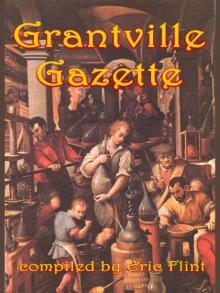 The Grantville Gazette Volumn VI
The Grantville Gazette Volumn VI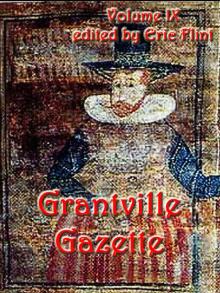 Grantville Gazette, Volume IX
Grantville Gazette, Volume IX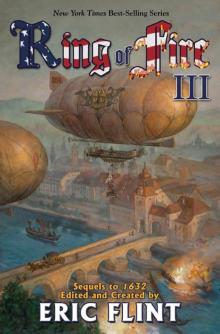 Ring of Fire III
Ring of Fire III Grantville Gazette-Volume XIII
Grantville Gazette-Volume XIII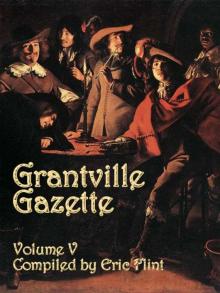 Grantville Gazette V
Grantville Gazette V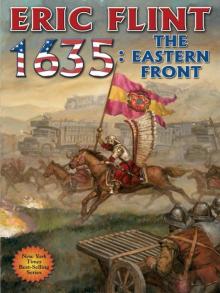 1635: The Eastern Front
1635: The Eastern Front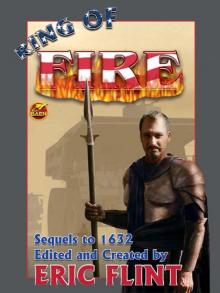 Ring of Fire
Ring of Fire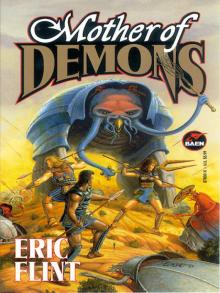 Mother of Demons
Mother of Demons 1824: The Arkansas War
1824: The Arkansas War Grantville Gazette 43
Grantville Gazette 43 Forward the Mage
Forward the Mage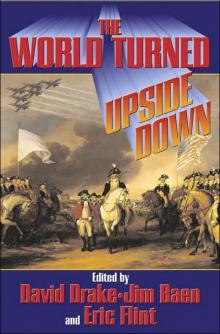 The World Turned Upside Down
The World Turned Upside Down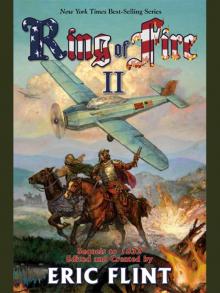 Ring of Fire II
Ring of Fire II Boundary
Boundary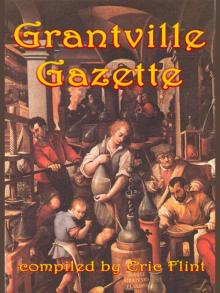 Grantville Gazette VI
Grantville Gazette VI 1812: The Rivers of War
1812: The Rivers of War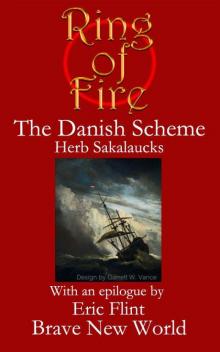 1633
1633 All the Plagues of Hell
All the Plagues of Hell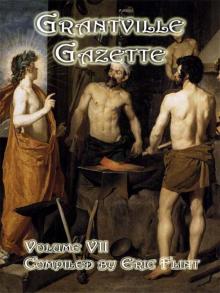 Grantville Gazette, Volume 7
Grantville Gazette, Volume 7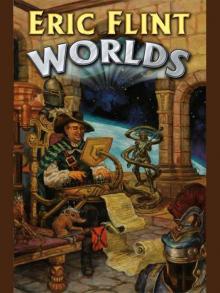 Worlds
Worlds 1632
1632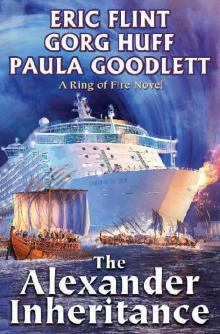 The Alexander Inheritance
The Alexander Inheritance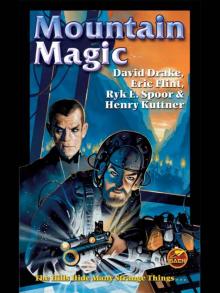 Diamonds Are Forever
Diamonds Are Forever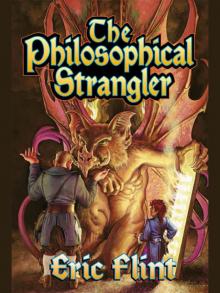 The Philosophical Strangler
The Philosophical Strangler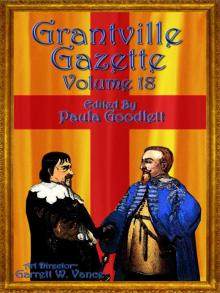 Grantville Gazette, Volume VIII
Grantville Gazette, Volume VIII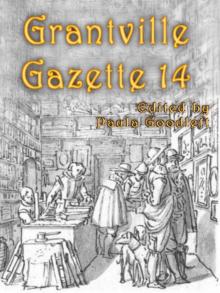 Grantville Gazette-Volume XIV
Grantville Gazette-Volume XIV Genie Out of the Bottle
Genie Out of the Bottle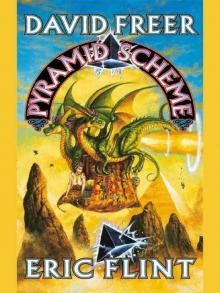 Pyramid Scheme
Pyramid Scheme 1636- the China Venture
1636- the China Venture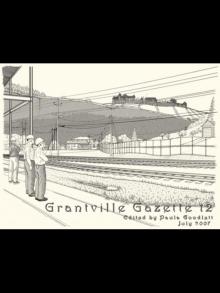 Grantville Gazette, Volume XII
Grantville Gazette, Volume XII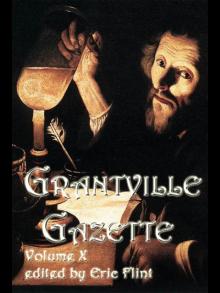 Grantville Gazette, Volume I
Grantville Gazette, Volume I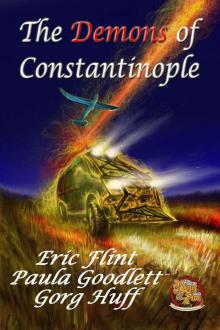 The Demons of Constantinople
The Demons of Constantinople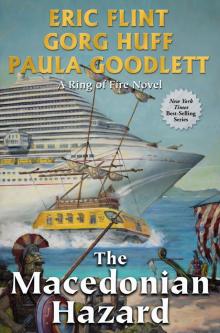 The Macedonian Hazard
The Macedonian Hazard 1634- the Galileo Affair
1634- the Galileo Affair The Shaman of Karres
The Shaman of Karres 1636: The Ottoman Onslaught
1636: The Ottoman Onslaught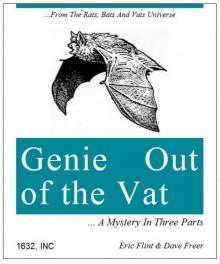 The Genie Out of the Vat
The Genie Out of the Vat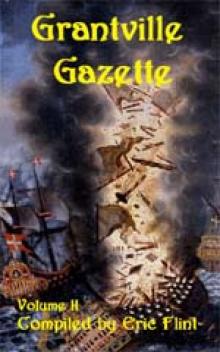 The Grantville Gazette Volumn II
The Grantville Gazette Volumn II 1636: The Saxon Uprising
1636: The Saxon Uprising 1634 The Baltic War
1634 The Baltic War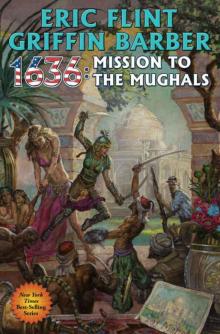 1636: Mission to the Mughals
1636: Mission to the Mughals !632: Joseph Hanauer
!632: Joseph Hanauer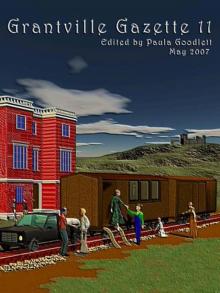 Grantville Gazette-Volume XI
Grantville Gazette-Volume XI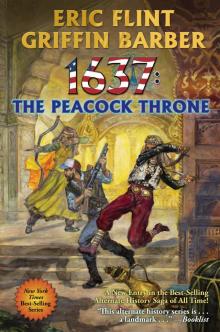 1637: The Peacock Throne
1637: The Peacock Throne 1636: The China Venture
1636: The China Venture The Rats, the Bats & the Ugly
The Rats, the Bats & the Ugly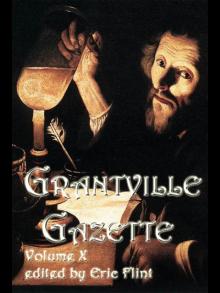 Grantville Gazette, Volume X
Grantville Gazette, Volume X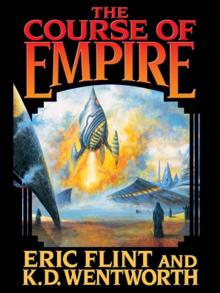 The Course of Empire
The Course of Empire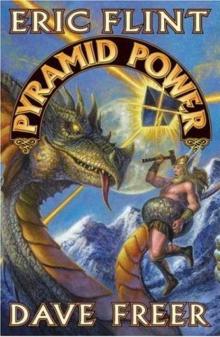 Pyramid Power
Pyramid Power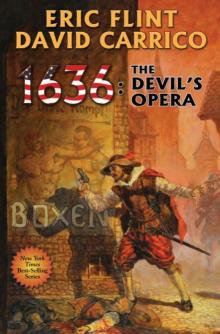 1636: The Devil's Opera
1636: The Devil's Opera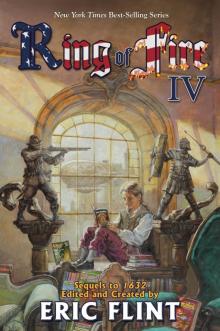 Ring of Fire IV
Ring of Fire IV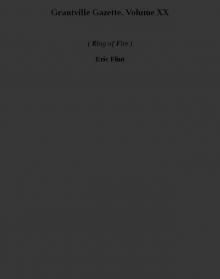 Grantville Gazette. Volume XX (ring of fire)
Grantville Gazette. Volume XX (ring of fire) 1634: The Baltic War (assiti chards)
1634: The Baltic War (assiti chards)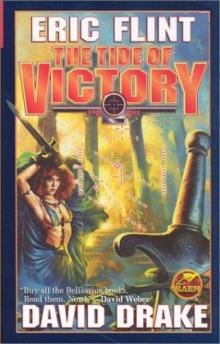 The tide of victory b-5
The tide of victory b-5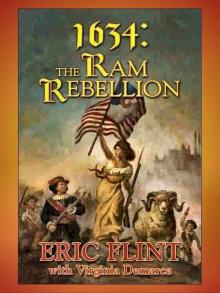 1634: The Ram Rebellion
1634: The Ram Rebellion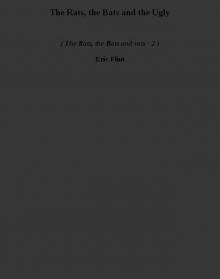 The Rats, the Bats and the Ugly trtbav-2
The Rats, the Bats and the Ugly trtbav-2 Castaway Resolution
Castaway Resolution Council of Fire
Council of Fire Slow Train to Arcturus
Slow Train to Arcturus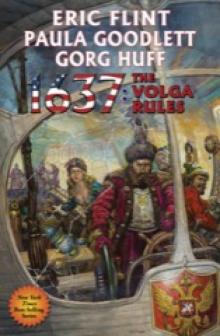 1637_The Volga Rules
1637_The Volga Rules Boundary b-1
Boundary b-1 1637: No Peace Beyond the Line
1637: No Peace Beyond the Line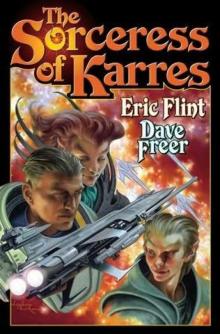 The Sorceress of Karres
The Sorceress of Karres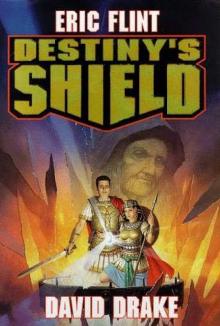 Destiny's shield b-3
Destiny's shield b-3 In the Heart of Darkness b-2
In the Heart of Darkness b-2 Grantville Gazette.Volume 22
Grantville Gazette.Volume 22 Carthago Delenda Est э-2
Carthago Delenda Est э-2 1635: The Eastern Front (assiti shards)
1635: The Eastern Front (assiti shards) 1812-The Rivers of War
1812-The Rivers of War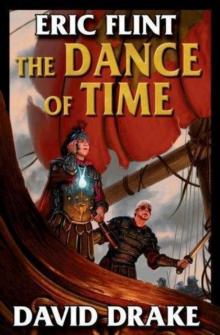 The Dance of Time b-6
The Dance of Time b-6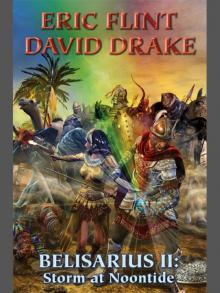 Belisarius II-Storm at Noontide
Belisarius II-Storm at Noontide Iron Angels
Iron Angels 1636:The Saxon Uprising as-11
1636:The Saxon Uprising as-11 1812: The Rivers of War tog-1
1812: The Rivers of War tog-1 Jim Baens Universe-Vol 1 Num 6
Jim Baens Universe-Vol 1 Num 6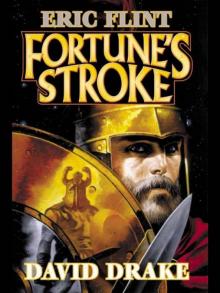 Fortune's stroke b-4
Fortune's stroke b-4 1637 The Polish Maelstrom
1637 The Polish Maelstrom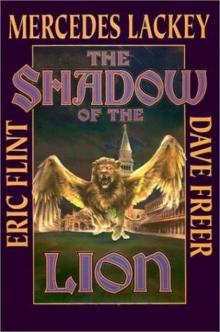 The Shadow of the Lion hoa-1
The Shadow of the Lion hoa-1 Grantville Gazette.Volume XVI
Grantville Gazette.Volume XVI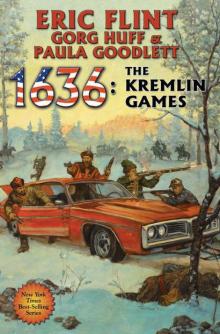 1636:The Kremlin games rof-14
1636:The Kremlin games rof-14 1824: The Arkansas War tog-2
1824: The Arkansas War tog-2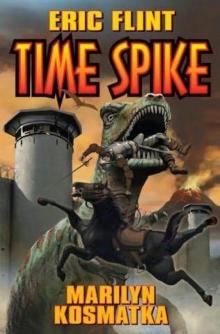 Time spike
Time spike Jim Baen's Universe-Vol 2 Num 1
Jim Baen's Universe-Vol 2 Num 1 Grantville Gazette.Volume VII
Grantville Gazette.Volume VII 1634: The Ram Rebellion (assiti shards)
1634: The Ram Rebellion (assiti shards) Grantville Gazette.Volume XVII (ring of fire)
Grantville Gazette.Volume XVII (ring of fire) Jim Baens Universe-Vol 2 Num 5
Jim Baens Universe-Vol 2 Num 5 1635: The Cannon Law (assiti shards)
1635: The Cannon Law (assiti shards) Grantville Gazette. Volume 21
Grantville Gazette. Volume 21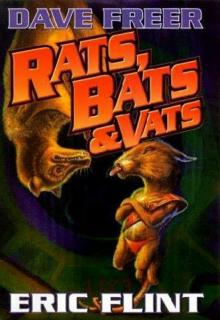 Rats, Bats and Vats rbav-1
Rats, Bats and Vats rbav-1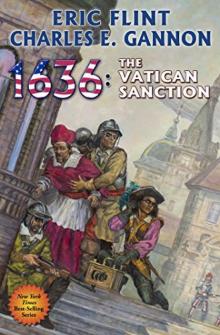 1636_The Vatican Sanction
1636_The Vatican Sanction The Aethers of Mars
The Aethers of Mars Jim Baen's Universe Volume 1 Number 5
Jim Baen's Universe Volume 1 Number 5 1634: The Bavarian Crisis (assiti chards)
1634: The Bavarian Crisis (assiti chards) Grantville Gazette Volume 24
Grantville Gazette Volume 24 TITLE: Grantville Gazette.Volume XVIII (ring of fire)
TITLE: Grantville Gazette.Volume XVIII (ring of fire)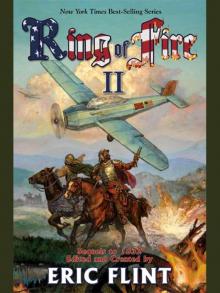 Ring of fire II (assiti shards)
Ring of fire II (assiti shards)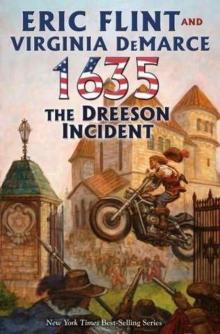 1635:The Dreeson Incident (assiti shards)
1635:The Dreeson Incident (assiti shards) Jim Baen's Universe-Vol 2 Num 4
Jim Baen's Universe-Vol 2 Num 4 In the Heart of Darkness
In the Heart of Darkness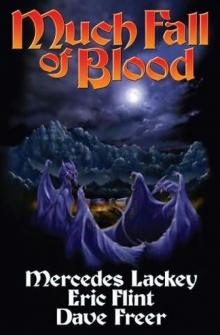 Much Fall Of Blood hoa-3
Much Fall Of Blood hoa-3